- Sichuan -
Called the Land of Abundance, is in abundance of diverse natural resources and cultural heritages, and has been one of the hot destinations for many travelers to China. Central Sichuan is also home to the giant panda. To the north the visage changes into a fairyland of alpine valleys and blue-green lakes. Sichuan’s Tibetan face appears as you venture west. This is Kham, one of the former Tibetan prefectures: a vast landscape of plateau grasslands and glacial mountains where Tibetan culture still thrives and you’re certain to have your most challenging, yet most magical, experiences.
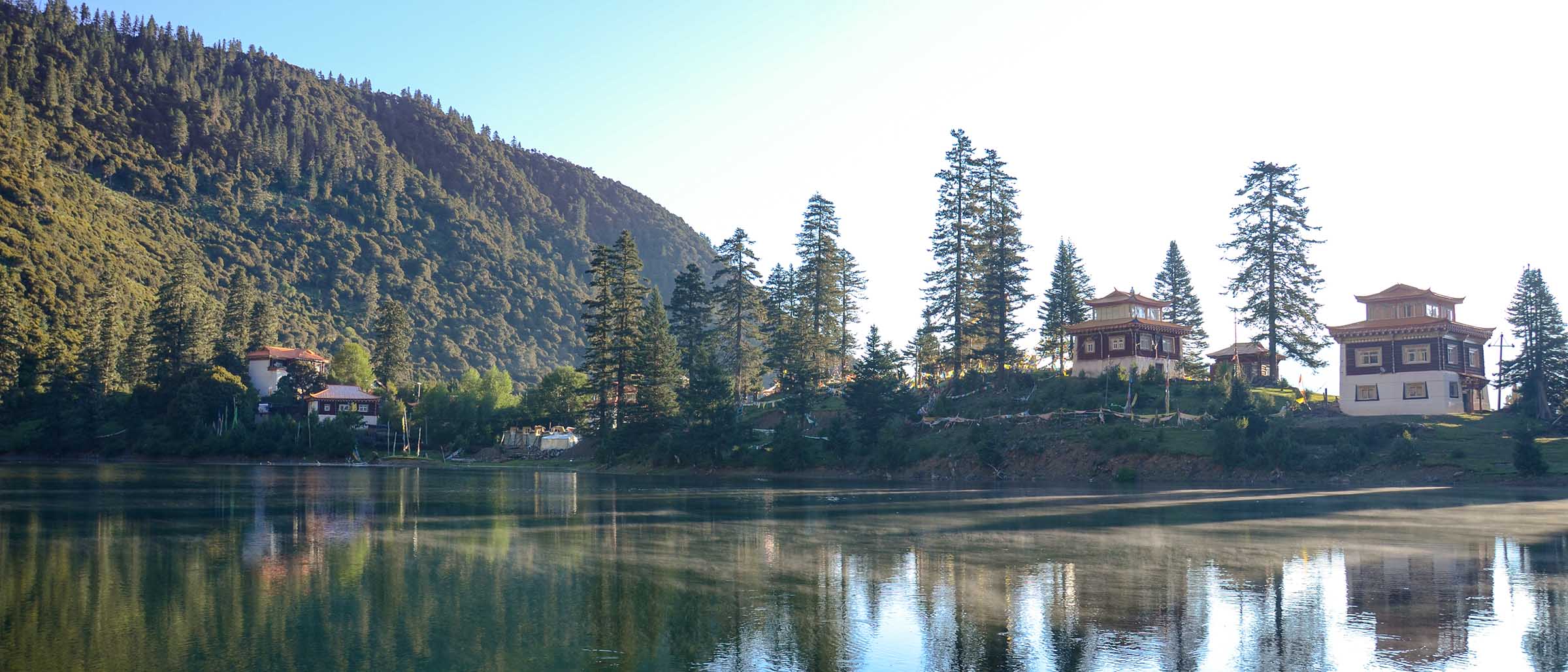
Basic Information
Chinese Name: 四川(Sichuan)
Location: the upper reach of the Yangtze River and the hinterland of Southwest China.
Provincial Capital: Chengdu
Acreage: about 485,000 square kilometers.
Famous Cities: Chengdu, Leshan, Jiuzhaigou, Kangding
Population: 83,750,000 (2019) in total; 55 ethnic groups with a population of 4.91 million(2010) in Sichuan.
Major Ethnic Group: The Han, Yi, Zang, Qiang, Miao, Tujia, Lisu, Naxi, Buyi, Bai, Zhuang, and Dai are indigenous ethnic groups in the Province.
Sichuan History
The Sichuan Basin and adjacent areas of the Yangtze watershed were a cradle of indigenous civilizations dating back to at least the 15th century BC, coinciding with the Shang in northern China. The region had its own distinct religious beliefs and worldview. The earliest culture found in the region through archaeological investigation is the Baodun culture (c.2700–1750 BC) excavated in the Chengdu Plain.
Concise History Thereafter
Han Dynasty (206BC-220AD) – The area became the center of world's lacquer craftwork and the birthplace of tea culture with advanced technology of Shu Brocade.
Five Dynasties period (907-960) – the emperor of Later Shu planted hibiscus all round the city wall, hence Chengdu got the nickname, Furong Cheng (Hibiscus City), or Rong Cheng for short.
Tang Dynasty (618-907) – Engraving typography was first invented and used here.
Song Dynasty (960-1279) – Chengdu led the list, being a foremost prosperous city on a par with Yangzhou which had the busiest water transport and port in China at that time. The earliest paper currency in the world 'Jiao Zi' was issued there during the Northern Song Dynasty (960-1127).
Ming (1368-1644) and Qing (1644-1911) dynasties – The previously flourishing city vanished during the war during the late Ming Dynasty but its economy made a gradual recovery during the Qing Dynasty. Through two expansions during Kangxi and Qianlong Periods, a grand new city evolved once more. Following the Opium War, the city went into a decline and its role overtaken by Chongqing.
In modern times, the city was re-established as the capital of Sichuan Province in 1928, and has remained so following the foundation of the PRC.
Sichuan Culture
As early as in the trace of human activity, the Wushan people and Ziyang people once lived in Sichuan. A saying goes like this, “The people from western and eastern Sichuan shared the same ancestors.” As Chinese civilization developed, the culture of Sichuan glowed with dazzling light in successive dynasties. Up until now, Sichuan remains a renewed and important part of Chinese culture.
With long history and strong cultural background, Sichuan boasts profound culture with various distinctive features. Characterized by incredible Sichuan Opera, fabulous Sichuan Cuisine, tea culture, and the local leisure life, Sichuan culture provides great fun and interesting activities to enjoy.
In the markets and streets as well as the village roads throughout Sichuan, you can see teahouses with unique Sichuan styles. Sitting in bamboo chairs, people gather around wooden tables, hold special tea wares exclusively owned by the teahouse and take a sip of fragrant tea.
Sichuan Grography
Sichuan province is located in western central China. The easternportion of the province has countless winding and spectacular rivers, most of them tributaries flowing southward to the Yangtze (Chang Jiang) — including the Min River. The western border with Tibet (Xizang Zizhiqu) follows the basin between the north-south running Ningjing and Shaluli mountain ranges in the west and east respectively. Sichuan also shares a border with Qinghai in the northwest and Shaanxi in the northeast. East of the Shaluli range, the Daxue range runs roughly parallel. East of the Dadu River from Daxue Shan, the Qionglai Mountains run northeast with the eastern edge falling sharply and ending the Tibetan Plateau. South of Qionglai Shan the Tibetan Plateau ends similarly with the southeast running Daliang Mountains. Sichuan also borders Hubei, Hunan, and Gansu provinces
Sichuan Climate
Sichuan is located in the transitional zone between Qinghai-Tibet Plateau and the eastern plains and therefore has complex and diverse climates with rather obvious regional differences and vertical changes. There are distinct disparities between east and west Sichuan as well.
The overall characteristics of Sichuan’s climate can be summarized as follows: monsoon climate is obvious and rain and heat happens in the same seasons; regional climate differences are prominent in that the east is characterized by warm winters, early springs, hot summers, rainy autumns, much cloud and fog, little sunshine and a long growing season while the west is characterized by coldness, long winters, almost no summer, sufficient sunshine, concentrated rainfall and distinct dry and rainy seasons; vertical climate changes are significant and climate types are varied; meteorological disasters happen in various forms with a high frequency and large scope, which are mainly droughts, rainstorms, floods and cold weather.e:
The best time to travel in Sichuan is in spring and autumn, especially in February and March, July to October. Spring is dry in Sichuan lowlands and south area, with little but concentrated precipitation on the plateau. Summer is hot in Sichuan lowlands and south area, but on the plateau, there seems no summer. In July, the temperature has reached 25ºC to 29 ºC in the lowlands, 11 ºC to 17 ºC on the plateau, and 22 ºC to 26 ºC in the south. Autumn is rainy season in Sichuan lowlands and south area, but is with strong sunshine on the plateau. Winter is warm in Sichuan lowlands and south area, but a little cold on the plateau. In January, the temperature may be 3 ºC to 8 ºC in the lowlands, -9 ºC to 3 ºC on the plateau, and 8 ºC to 13 ºC in the south.
Tourism Resources
Called the Land of Abundance, is in abundance of diverse natural resources, and has been one of hot destinations for many travelers to China.
It's fitting that an ancient form of opera and magic called bianlian (face-changing) originated here, for Sichuan is a land of many guises. Capital Chengdu shows a modern face, but just beyond its bustling ring roads you'll find a more traditional landscape of mist-shrouded, sacred mountains, and a countryside scattered with ancient villages and cliffs of carved Buddhas.
Central Sichuan is also home to the giant panda, the most famous face in China. In the south, expect a veil of history and a muted beauty that sees far fewer travellers than the rest of the region.
To the north the visage changes again into a fairyland of alpine valleys and blue-green lakes. Sìchuan’s Tibetan face appears as you venture west. This is Kham, one of the former Tibetan prefectures: a vast landscape of plateau grasslands and glacial mountains where Tibetan culture still thrives and you’re certain to have your most challenging, yet most magical, experiences.Most of western Sichuan, rich in tourism resources, still remains untapped and awaits the exploration by visitors.Once stepping on the Land of Abundance, you can enjoy the fun of travel as much as you can.
You can appreciate a wide variety of beautiful landscape including sacred & mysterious mountains, fairyland of alpine valley, blue-green lakes, vast landscape of plateau grassland, glacial mountains where Tibetan culture still thrives, beautiful waterfalls, limestone caves, evergreen bamboo forests…
Hot Destinations: Chengdu, Leshan, Emeishan, Dujiangyan, Daocheng, Kangding, Ganzar...
World Heritage Sites: Jiuzhaigou Valley Scenic Area, Huanglong Scenic Area, Leshan Giant Buddha, Mount Emei, Dujiangyan Irrigation System, Mount Qingcheng, Sichuan Giant Panda Sanctuaries (like Wolong Panda Reserve)
Other Popular Attractions: Mount Siguniang, Yading Scenic Area, Danba Tibetan Village, Xinduqiao, Hailuogou Glacier, Dagu Glacier, Ruoergai Grassland,
Featured Activities: Panda volunteering, Sichuan food cooking, hiking & walking, kung fu learning, photography, cultural travel, Buddhism & Taoism travels…
Sichuan Cuisine
Represented by the local dishes of Chengdu and Chongqing, Sichuan cuisine is a style of Chinese cuisine originating in the Sichuan Province of southwestern China. As one of China's Four Major Styles of Cooking, Sichuan cuisine features spicy, tongue-numbing, savory, delicious, oily and heavily seasoned flavor. Sichuan cuisine enjoys a time-honored history and is well-reputed home and abroad. In 2010, Chengdu was declared a “City of Gastronomy” by UNESCO Creative Cities Network.
Known as the "heavenly country", Sichuan highlights its abundance of food and natural resources. Therefore, Sichuan cuisine features the well-arranged and enriched seasonings, particularly the use of garlic, ginger, chili peppers, as well as the unique Sichuan prickly ash. All these seasonings create the characteristic pungency and spiciness of Sichuan cuisine.
Statistics show that the number of Sichuan dishes has surpassed 5,000. Some representative dishes include Kung Pao Chicken, Mapo Tofu, Fish-flavored Pork Shred, Twice Cooked Pork and Sichuan Hotpot.
Sichuan Festivals
As the land of abundance in China, Sichuan also has many ethnic minorities that boast brilliant and colorful festivals that worthy your time during your travel in Sichuan.
Litang horse racing festival
August 1st
The horse racing festival is held on August 1st annually on Litang County of Ganzi Tibetan Autonomous Prefecture of Sichuan Province. On that day, the herdsmen wearing splendid attire gather on Litang from far and near, celebrating the festival joyfully together. On the racing field, spectators can admire the galloping horses, breathtaking horse skill performances, unique plateau landscape with rich ethnic characteristics and an ocean of happiness. During the festival, there are huge crowds of people and a number of tents are set up on the grassland. Besides, a grand Buddhist ceremony is also held during the festival every year.
Xichang Torch Festival
Jun. 25th(lunar calendar)
Xichang Torch Festival of the Yi nationality is held annually on the 25th day of the six lunar month of the traditional Chinese calendar, lasting for three days. It is the traditional festival of the Yi nationality for driving away evil spirits and praying for a prosperous year. On that day, the local people and tourists from many other places gather there, dancing and singing joyfully in praise of the brilliant national culture and spirit. Xichang is the largest area in China, inhabited by the Yi nationality with rich ethnic customs. On the first day, the local people satisfy their stomach with mutton, beef and pure wine. On the second and third day, the climax of the festival reaches and people of all ages dressed in splendid attire gather together. The men participate in the traditional competitive sports, such as bullfight, horse racing and wrestling, while women are singing and dancing. At night, all the people holding torches sit together around the bonfire, dancing and rejoicing with wild excitement overnight. Thus, the torch festival is also celebrated as “the oriental Carnival”.
Siguniang Mountain Worship Festival
May 5th of lunar calendar
Siguniang Mountain Worship Festival is held on the May 5th of Lunar Calendar. On this day, local Tibetan (Jiarong Tibetan) from all different villages will dress their traditional clothes and gather together to celebrate it. The ancient religious rituals and joyful folk songs and dances will be performed to worship a harvest year.
Zigong Dinosaur Lantern Festival
Jan. 7th-Jan 15th of lunar calendar
The Dinosaur Lantern Festival in Zigong city is held around the Spring festival, which can be dated back to Tang (618-907) and Song (960-1279) Dynasties. During the festival, the China’s colorful traditional lantern made of bamboo, silk, paper and glass bottles will displayed, together with the colorful modern-style lanterns.
Chengdu-Home of Giant Panda
Chengdu City is the capital of Sichuan Province now and called “Rongcheng City”. It is one of the famous historical and cultural cities in China and located at the middle reaches of the Minjiang River in the middle of Sichuan Province in central Chengdu Plain.
In the 4th century B. C, the king of Shu State moved his capital to this place and said, “we will make it a small city within the first year and a big one within the second. ” Hence the name Chengdu. During the past 2,300 years, Chengdu never changed its location and its name despite many upheavals.
With an area of 12,300 square km, the population of Chengdu is about 10 million. This city is divided into eight districts, four outlying cities and eight counties. About 3.5 million people reside in the city center.
Chengdu City is always reputed as “Land of Abundance” with its abundant water resources, fertile soil, opulent biological resources.
This modernization has no doubt been helped by the important role that Chengdu plays in terms of education and culture in China. Once one of the most important printing centers in the country, Chengdu has a long history as a destination for learned poets and artists to gather and seek inspiration. The great poet Du Fu, made his home here and today there are 14 colleges and an impressive university situated in the city.
Nestled amongst this affluence and development is another side to Chengdu. Traditional wooden Chinese architecture that once dominated this city can still be found in the outskirts although it is fast disappearing. What does still exist here however in abundance, is a great street life. Markets and street hawkers fill the streets dealing in everything you could possibly imagine, from snakes and snails to fortunes and foot scrubs.
Many travelers here are simply killing time or passing through en route to Tibet. This is however, a very pleasant city to do just this: feast on some great food and soak up some of the mellow atmosphere in one of the thousands of tea houses dotted about the city.
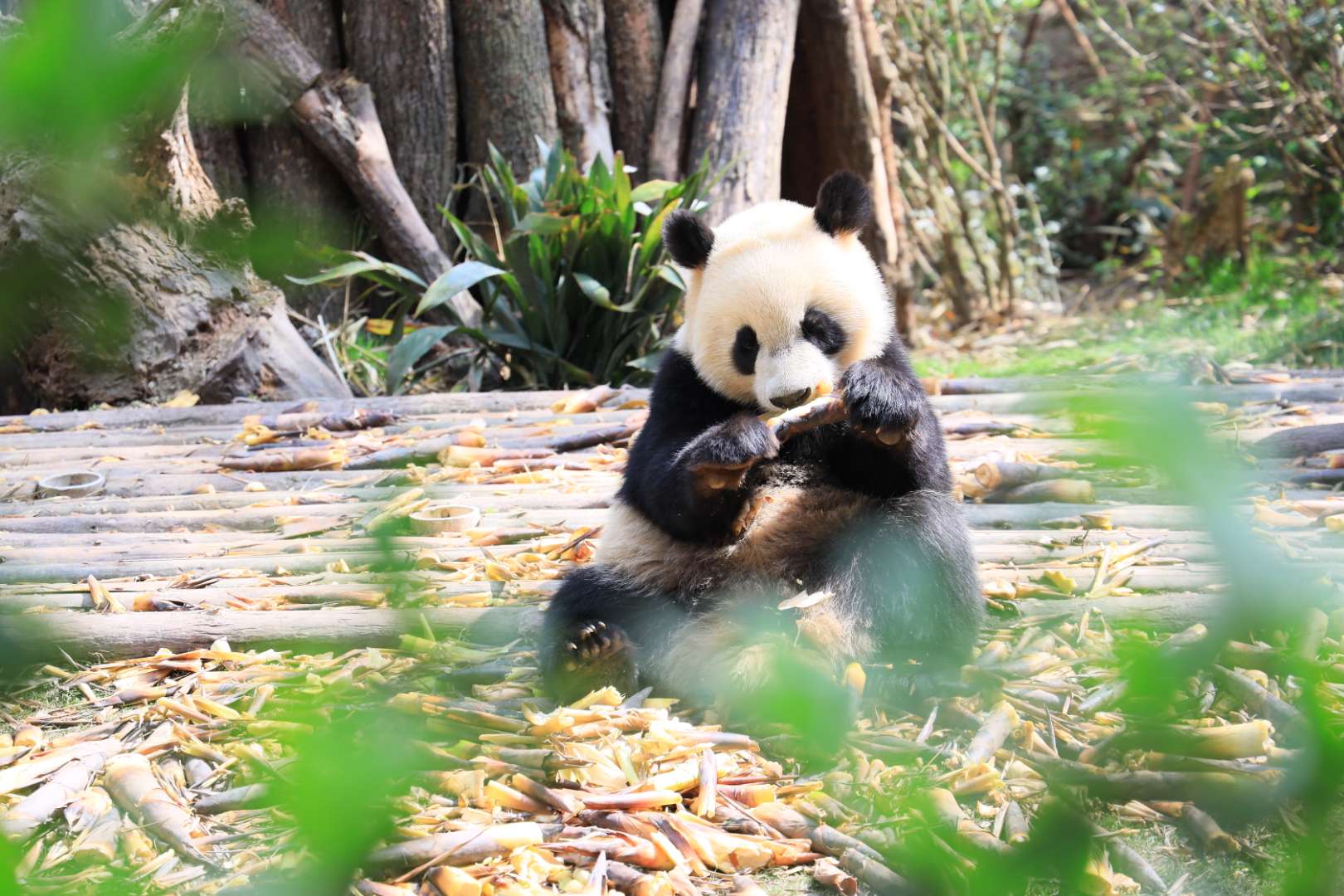
Culinary art and tea culture
The distinct characteristic of Sichuan cuisine is the use of spicy chilies and peppercorns. Local dishes include Mapo doufu, Chengdu Hot pot, and Dan Dan Mien. Mapo Doufu and Dan Dan Mien contain Sichuan peppers. An article by the Los Angeles Times (2006) called Chengdu "China's party city" for its carefree lifestyle. Chengdu has more tea houses and bars than Shanghai despite having less than half the population. Chengdu's tea culture dates back over a thousand years, including its time as the starting point of the Southern Silk Road.Chengdu is an officially recognised UNESCO City of Gastronomy.
Teahouse
Tea houses are ubiquitous in the city and range from ornate traditional establishments with bamboo furniture to simple modern tea houses. Teas on offer include jasmine, longjing and biluochun tea. Tea houses are popular venues for playing mahjong. Some larger tea houses offer live entertainment such as Sichuan opera performances.
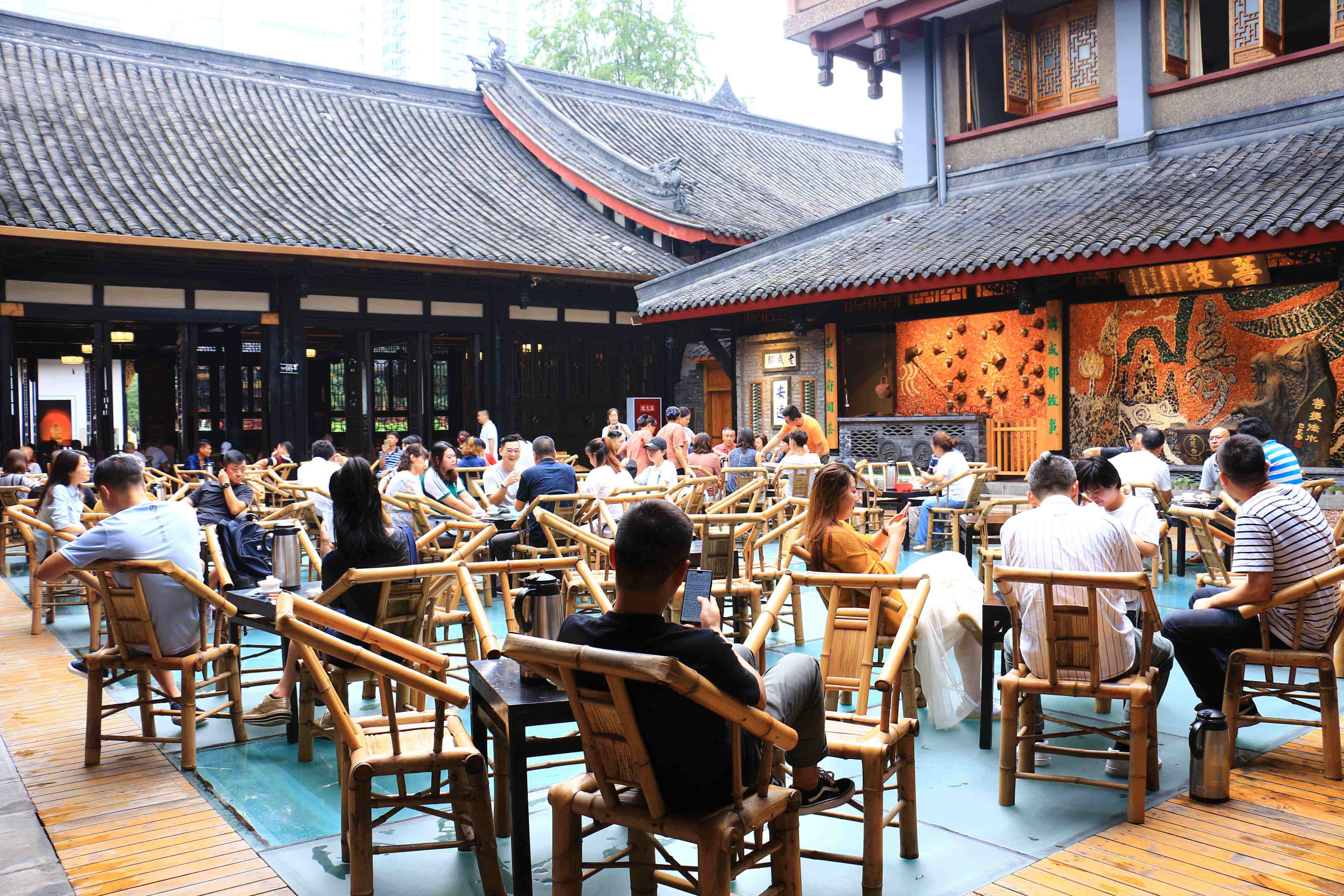
Hot Pot
Hot pot is a traditional Sichuanese food, made by putting vegetables, fish, or meat into a specially-made spiced soup. Chengdu residents eat hot pot often, sometimes inviting friends to go with them to one of the many hot pot restaurants that are widely distributed throughout Chengdu. Hot pot is a typical part of Chengdu residents' daily diet.
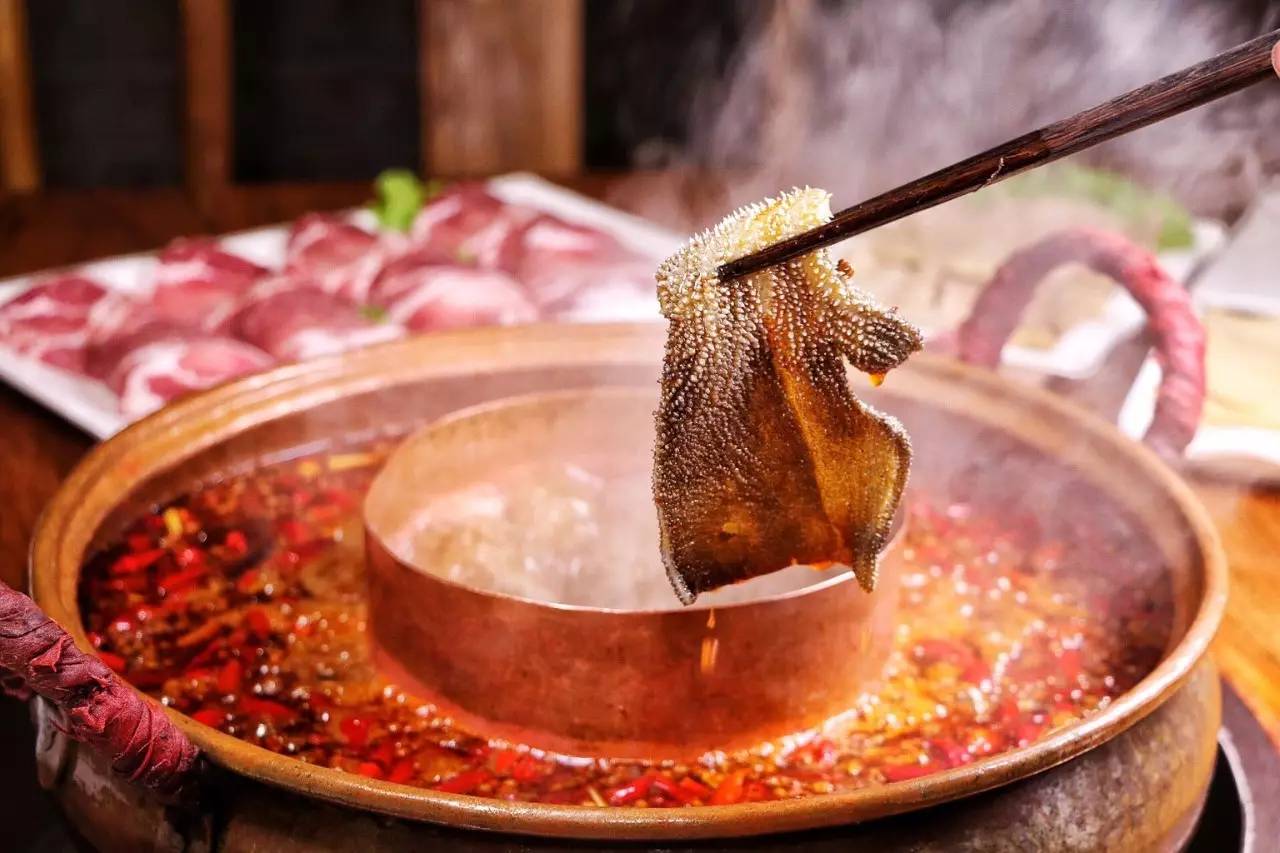
Mahjong
Mahjong has been an essential part of most local peoples' lives. After every day' s working, people gather their friends in their home or in the tea houses on the street to play Mahjong. On sunny days, local people like to play Mahjong on the sidewalks to enjoy the sunshine and also the time with friends. Almost every person aims to play Mahjong with money.
Mahjong is the most popular entertainment choice among locals for several reasons. Chengdu locals have simplified the rules and made it easier to play as compared to, Cantonese Mahjong. Also, Mahjong in Chengdu is a way to meet old friends and to strengthen family relationships. In fact, many business people negotiate deals while playing Mahjong.Furthermore, the elderly like to play Mahjong because they believe Mahjong makes them think and prevents dementia.
Rural tourism: Nong Jia Le
Chengdu claims to have first practiced the modern business model of 'Nong Jia Le' (Happy Rural Homes). It refers to the practice of suburban and rural residents converting their houses into restaurants, hotels and entertainment spaces in order to attract city dwellers.
Nong Jia Le features different styles and price levels and have been thriving around Chengdu. They provide gateways for city dwellers to escape the city, offer delicious and affordable home-made dishes, and provide mahjong facilities.
World natural and cultural heritage sites
Mount Qingcheng
Mount Qingcheng is amongst the most important centres of Taoism (Daoism) in China. It is situated in the suburbs of Dujiangyan City and connected to downtown Chengdu 70 km (43 mi) away by the Cheng-Guan Expressway.
With its peak 1,600 m (5,200 ft) above sea level, Mount Qingcheng enjoys a cool climate, but remains a lush green all year round and surrounded by hills and waterways. Mount Qingcheng's Fujian Temple, Tianshi Cave, and Shizu Hall are some of the existing more well-known Taoist holy sites. Shangqing Temple is noted for an evening phosphorescent glow locally referred to as "holy lights".
Dujiangyan Irrigation System
The Dujiangyan Irrigation System (58 km (36 mi) away from Chengdu proper) is the oldest existing irrigation project in the world with a history of over 2000 years diverting water without a dam to distribute water and filter sand with an inflow-quantity control. The system was built by Libing and his son. The irrigation system contains prevents floods and droughts throughout the Plain of Chengdu.
Sichuan Giant Panda Sanctuaries
Covering a total of 9,245 km2 (3,570 sq mi) over 12 distinct counties and 4 cities, Sichuan Giant Panda Sanctuaries, lie on the transitional alp-canyon belt between the Sichuan Basin and the Qinghai-Tibetan Plateau. It is the largest remaining continuous habitat for giant pandas and home to more than 80 percent of the world's wild giant pandas. Globally speaking, it is also the most abundant temperate zone of greenery. The reserves of the habitat are 100–200 km (62–124 mi) away from Chengdu.
The Sichuan Giant Panda Sanctuaries are the most well-known of their kind in the world, with Wolong Nature Reserve, generally considered as the "homeland of pandas". It is a core habitat with unique natural conditions, complicated landforms, and a temperate climate with diverse wildlife. Siguniang Mountain, sometimes called the "Oriental Alpine" is approximately 230 km (140 mi) away from Chengdu, and is composed of four adjacent peaks of the Traversal Mountain Range. Among the four peaks, the fourth and highest stands 6,250 m (20,510 ft) above sea level, and is perpetually covered by snow.
Culture of poetry and the Three Kingdoms
Wuhou Shrine (Temple of Marquis Wu) is perhaps the most influential museum of Three Kingdoms relics in China. It was built in the Western Jin period (265–316) in the honor of Zhuge Liang, the famous military and political strategist who was Prime Minister of the Shu Han State during the Three Kingdoms period (220–280). The Shrine highlights the Zhuge Liang Memorial Temple and the Hall of Liu Bei (founder of the Shu Han state), along with statues of other historical figures of Shu Han, as well as cultural relics like stone inscriptions and tablets. The Hui Mausoleum of Liu Bei represents a unique pattern of enshrining both the emperor and his subjects in the same temple, a rarity in China.
Du Fu thatched cottage
Du Fu was one of the most noted Tang dynasty poets; during the Lushan-Shi Siming Rebellion, he left Xi'an (then Chang'an) to take refuge in Chengdu. With the help from his friends, the thatched cottage was built along the Huanhua Stream in the west suburbs of Chengdu, where Du Fu spent four years of his life and produced more than 240 now-famous poems. During the Song dynasty, people started to construct gardens and halls on the site of his thatched cottage to honor his life and memory. Currently, a series of memorial buildings representing Du Fu's humble life stand on the river bank, along with a large collection of relics and various editions of his poems.
Ancient Shu civilization
The Jinsha Ruins are the first significant archeological discovery in China of the 21st century and were selected in 2006 as a "key conservation unit" of the nation. The Jinsha Relics Museum is located in the northwest of Chengdu, about 5 km (3.1 mi) from downtown. As a theme-park-style museum, it is for the protection, research, and display of Jinsha archaeological relics and findings. The museum covers 300,000 m2 (3,200,000 sq ft), and houses relics, exhibitions, and a conservation center.
Sanxingdui Museum
Situated in the northeast of the state-protected Sanxingdui Site, Sanxingdui Museum is 40 km (25 mi) north of Chengdu, covering a total area of 7,000 square metres (75,000 square feet).
The main collection highlights the Ancient City of Chengdu, Shu State & its culture, while displaying thousands of valuable relics including earthenware, jade wares, bone objects, gold wares, and bronzes that have been unearthed from Shang dynasty sacrificial sites.
Buddhist and Taoist cultures
Chengdu Daci Monastery
Known as the "Nonpareil Monastery" in China, the Daci Monastery in downtown Chengdu was first built during the Wei and Jin dynasties, with its cultural height during the Tang and Song dynasties. Xuanzang, an eminent Tang dynasty monk, was initiated into monkhood and studied for several years here; during this time, he gave frequent sermons in Daci Monastery.
Wenshu Monastery
Also named Xinxiang Monastery, Wenshu Monastery is the best preserved Buddhist temple in Chengdu. Initially built during the Tang dynasty, it has a history dating back 1,300 years. Parts of Xuanzang's skull are held in consecration here (as a relic). The traditional home of scholar Li Wenjing is on the outskirts of the complex.
Baoguang Monastery
Located in Xindu District, Baoguang (meaning divine light) Monastery enjoys a long history and a rich collection of relics. It is believed that it was constructed during the East Han period and has appeared in written records since the Tang dynasty. It was destroyed during the Ming dynasty in the early 16th century. In 1607, the ninth year of the reign of the Kangxi Emperor of the Qing dynasty, it was rebuilt.
Qingyang Taoist Temple
Located in the western part of Chengdu, Qingyang Temple ('Green Goat Temple') is not only the largest and oldest Taoist temple in the city, but also the largest Taoist temple in Southwest China. The only existing copy of "Daozang Jiyao", a collection of classic Taoist scriptures, is preserved in the temple.
According to history, Qingyang Temple was the place where Lao Tzu preached his famous Dao De Jing to his disciple, Ying Xi.
Featured streets and historic towns
The Wide and Narrow Lanes
The Wide and Narrow Lanes (Kuan Xiangzi and Zhai Xiangzi) were first built during the Qing dynasty for Manchu soldiers. The lanes remained residential until 2003 when the local government turned the area into a mixed-use strip of restaurants, teahouses, bars, avant-garde galleries, and residential houses.
Historic architecture has been well preserved in the Wide and Narrow lanes.
Jinli Street
Nearby Wuhou Shrine, Jinli is a popular commercial and dining area resembling the style of traditional architecture of western Sichuan. "Jinli" (锦里) is the name of an old street in Chengdu dating from the Han dynasty and means "making perfection more perfect".
The ancient Jinli Street was one of the oldest and the most commercialized streets in the history of the Shu state and was well known throughout the country during the Qin, Han and Three Kingdoms periods.
Many aspects of the urban life of Chengdu are present in the current-day Jinli area: teahouses, restaurants, bars, theatres, handicraft stores, local snack vendors, and specialty shops.
Huanglongxi Historic Town
Facing the Jinjiang River to the east and leaning against Muma Mountain to the north, the ancient town of Huanglongxi is approximately 40 km (25 mi) southeast of Chengdu. It was a large military stronghold for the ancient Shu Kingdom. The head of the Shu Han State in the Three Kingdoms period was seated in Huanglongxi, and for some time, the general government offices for Renshou, Pengshan, and Huayang counties were also located here.
Chunxi Road
Located in the center of downtown Chengdu, Chunxi Road (春熙路) is a trendy and bustling commercial strip with a long history. It was built in 1924 and was named after a part of the Tao Te Ching.
Today, it is one of the most well-known and popular fashion and shopping centers of Chengdu, lined with shopping malls, luxury brand stores, and boutique shops.
Anren Historic Town
Anren Historic Town is located 39 km (24 mi) west of Chengdu. It was the hometown of Liu Wencai, a Qing dynasty warlord, landowner and millionaire. His 27 historic mansions have been well preserved and turned into museums. Three old streets built during the Republic of China period are still being used today by residents. Museums in Anren have a rich collection of more of than 8 million pieces of relics and artifacts. A museum dedicated to the memorial of the 2008 Sichuan earthquake was built in 2010.
Luodai Historic Town
Luodai was built, like many historic structures in the area, during the period of the Three Kingdoms. According to legend, the Shu Han emperor Liu Shan dropped his jade belt into a well when he passed through this small town. Thus, the town was named 'lost belt' (落带). It later evolved into its current name 洛带 with the same pronunciation, but a different first character.
Luodai Historic Town is one of the five major Hakka settlements in China. Three or four hundred years ago, a group of Hakka people moved to Luodai from coastal cities. It has since grown into the largest community for Hakka people.

- $978.00
- 8D7N DAYS
01. Dagu Glacier, Arriving at the glacier of 4850m and staying with the wide and quite snow world, seeing No. 1 Glacier, and experiencing the powerful atmosphere of “standing on the highest mountain to view everything under their feet”02. …
Read More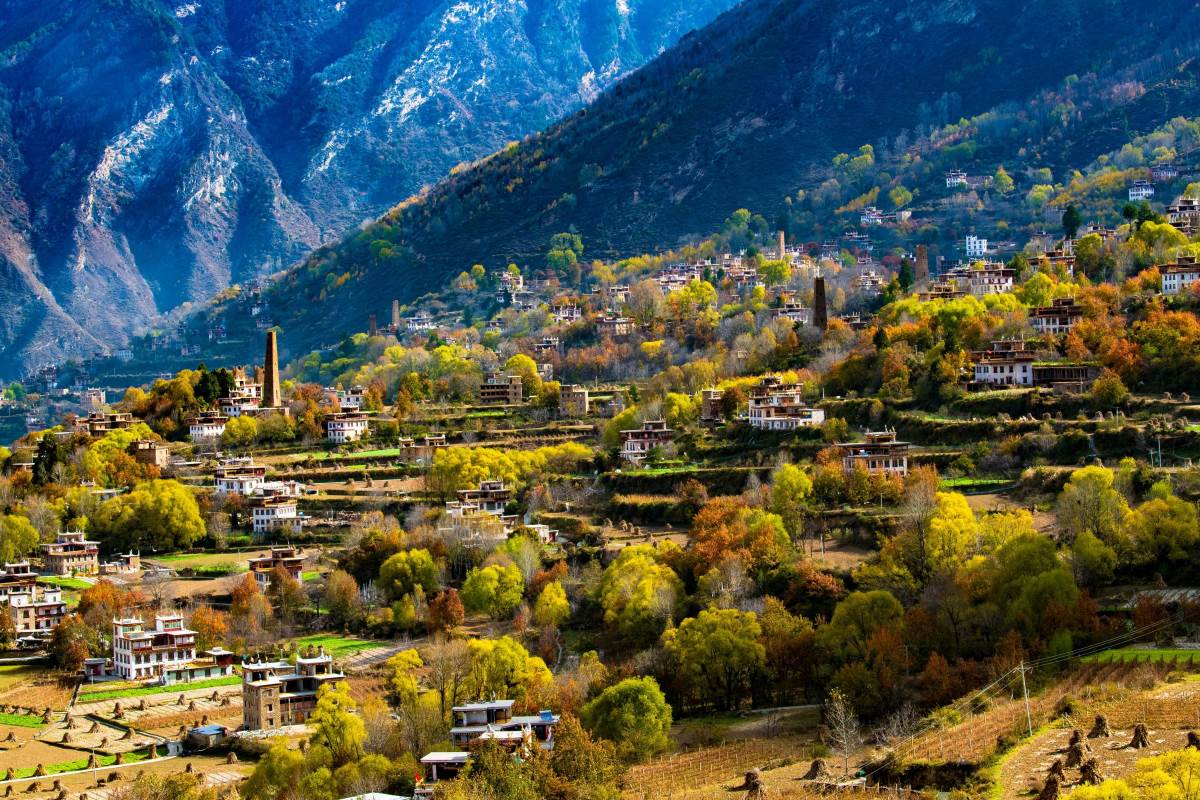
- $928.00
- 8D7N DAYS
01. Visit the world’s largest and most complete sanctuary for giant panda -Wolong Panda Reserve , where researchers are trying their best to release zoo panda to wild.02. Immerse yourself into the unique beauty of Western Sichuan in Mt Sigu…
Read More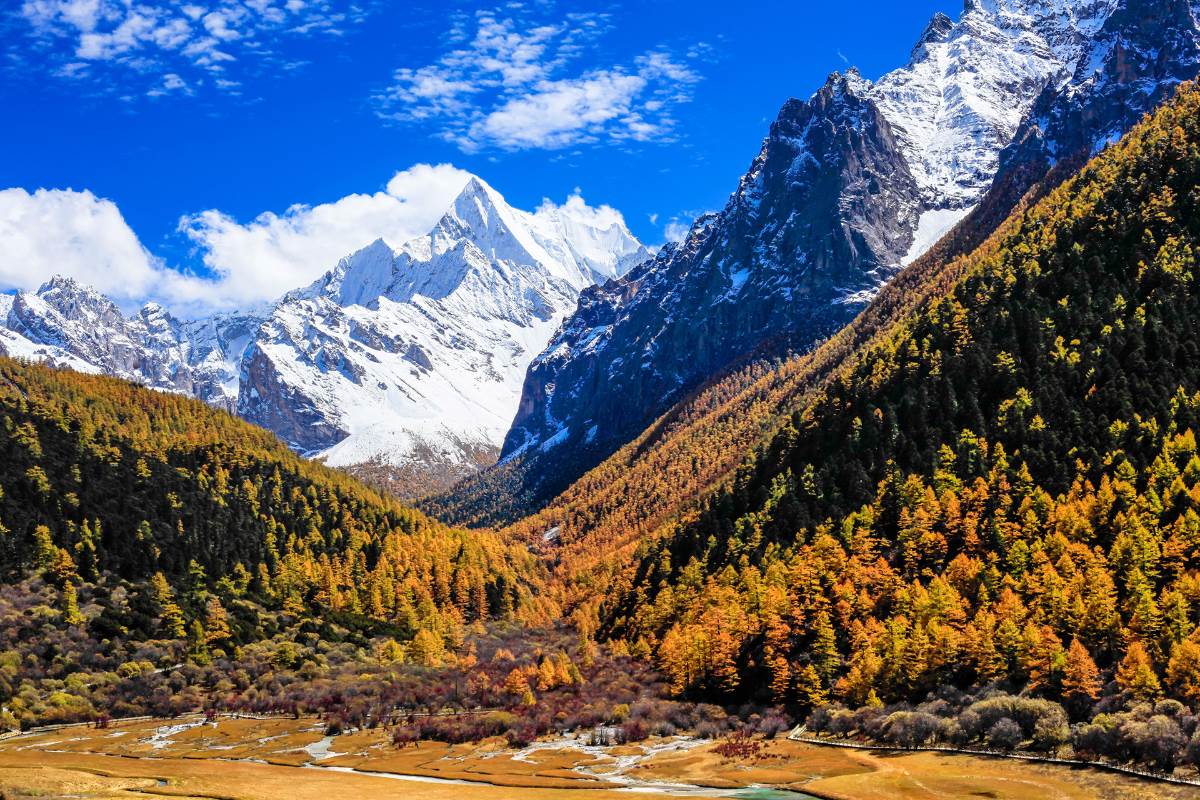
- $1028.00
- 9D8N DAYS
01. A classic photography tour deep into Danba, a county of watchtowers and China's top beautiful Tibetan villages, See different Tibetan people and also their unique Danba ancient stone towers, which was awarded as the top of the "…
Read More
- $548.00
- 6D5N DAYS
01. Visit Dujiangyan Irrigation System, explore the oldest and only surviving no-dam irrigation system in the world; and a wonder in the development of Chinese science.02. The famous place to enjoy the blossom of snow pear flowers in Jinchua…
Read More
- $USD598.00
- 6D5N DAYS
01. 2.5 days exploring Mt Siguniang by visiting Shuangqiao Valley and hiking Changping Valley and Haizi Valley, immerse yourself into the unique beauty of Western Sichuan in this Siguniang Trekking tour. Have a remarkable hiking to the Mount…
Read More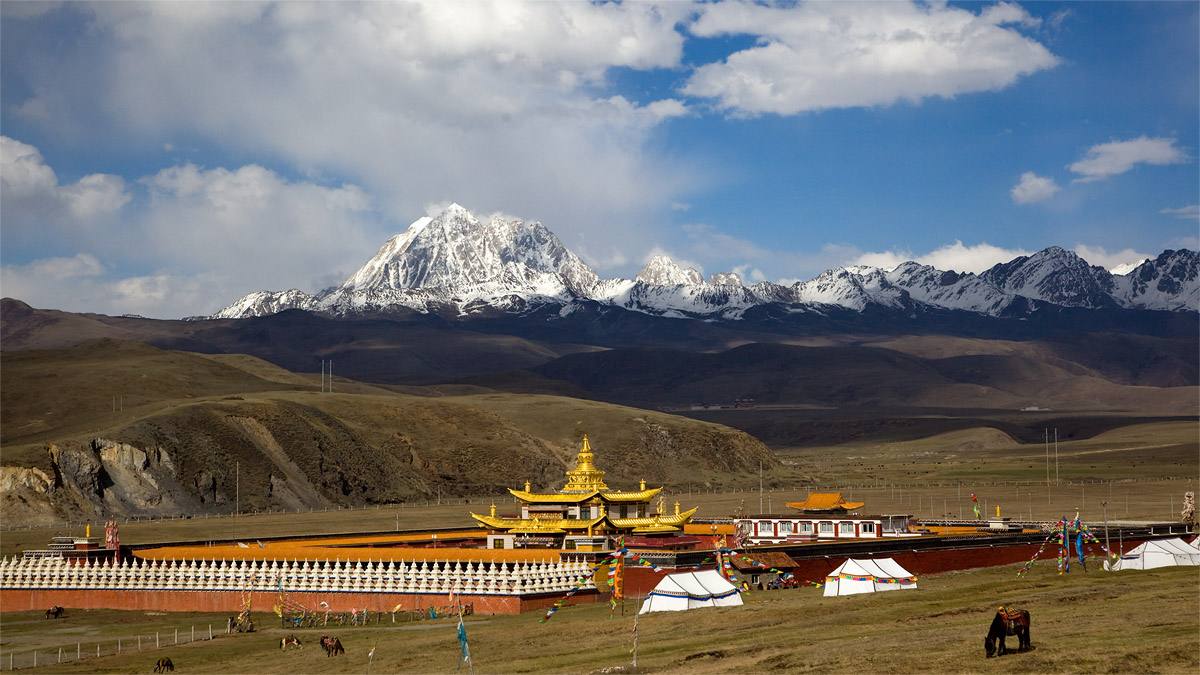
- $USD898.00
- 8D7N DAYS
01. Along the way, no matter on bus or during hiking, we will be surrounded by vast grasslands, forests, lakes and spectacular snowy mountains. Immerse in the amazing views, and feel the beauty of being close to nature!02. Walking in Danba T…
Read More
- $788.00
- 7D6N DAYS
01. A great tour of a visual feast to explore two magnificent World Heritage Site around Chengdu - Leshan Giant Buddha and Mount Emei in a leisure way.02. Enjoy the “king of shu mountains” Hailuogou Glacier , Hiking through the attractive …
Read More
- $1380.00
- 11D10N DAYS
01. A holy pilgrimage route that covers several topical Tibetan Buddhists monasteries in west Sichuan.02. splendid nature sceneries include grassland, snow-capped mountains, plateau lakes etc, ancient Tibetan villages, sacred monasterious, a…
Read More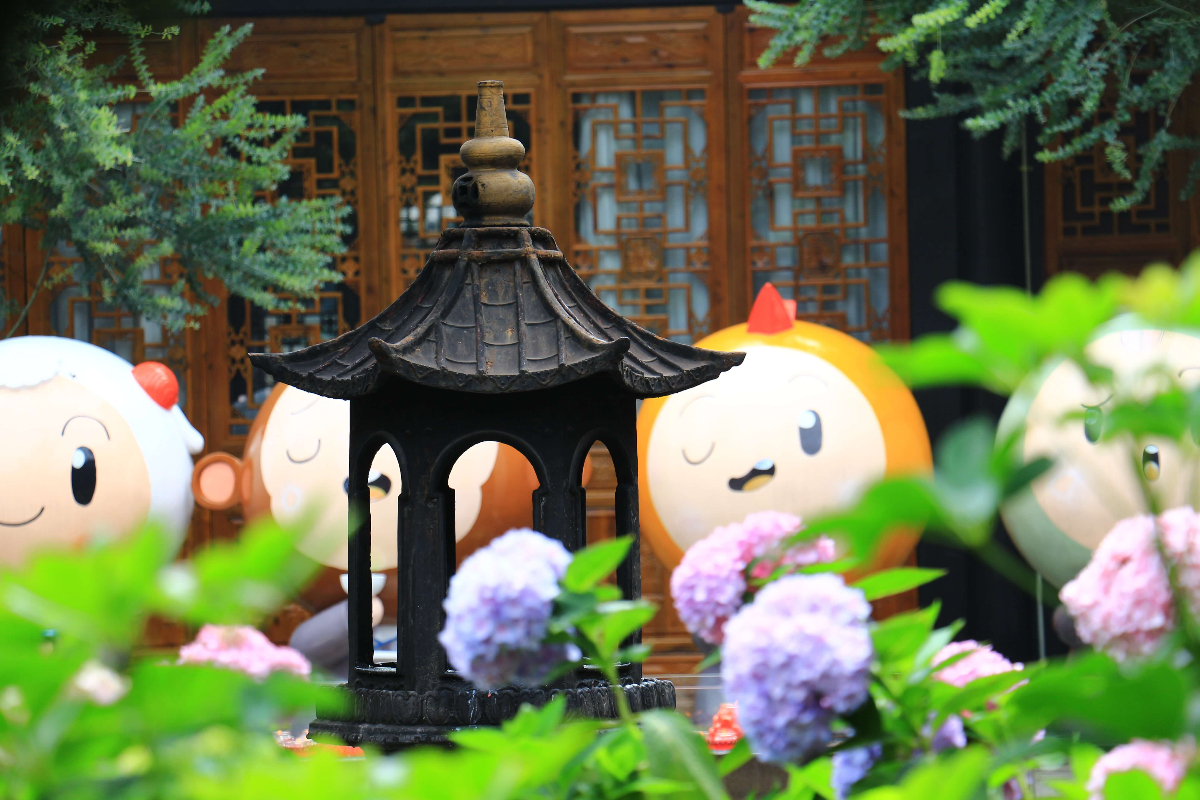
- $728.00
- 7D6N DAYS
01.Meet the lovely pandas in the Panda Breeding and Research Center, Getting a close-up look at China's most iconic residents.02. Enjoying a cup of traditional Chinese tea and absorb the special atmosphere of Chengdu.03. Play with Sichua…
Read More
- $680.00
- 8D7N DAYS
01. Have a walk in the believed-to-be “Paradise of Photographers” Xinduqiao to experience local Khampa Tibetan landscape and local people,enjoying the endless sub-alpine meadow, scattered yaks in Xinduqiao.02. Visiting the highest town in …
Read More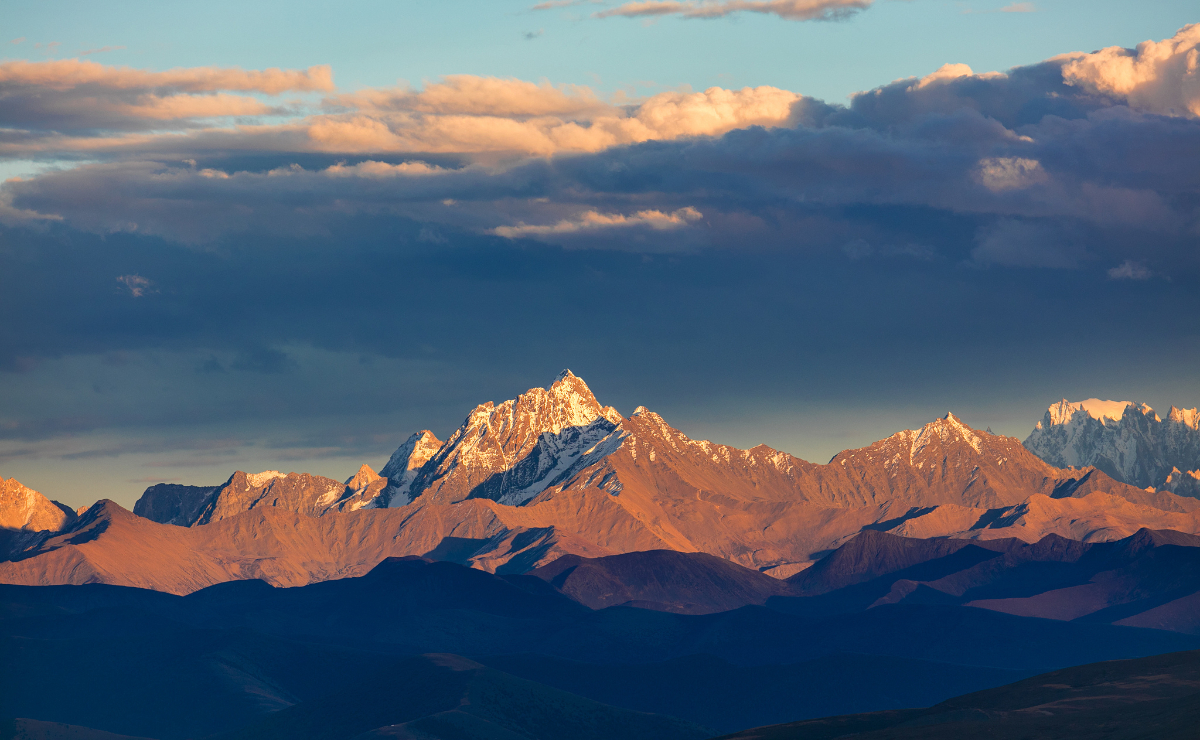
- $1380.00
- 9D8N DAYS
01. Trek beneath Minya Konka (7556m), the highest peak beyond the Himalaya, meet the distinctive Khampa and Minyak communities of the Kham region02. Be surrounded by vast grasslands, forests, lakes and spectacular snowy mountains. Immerse in…
Read More